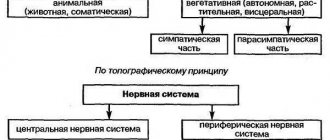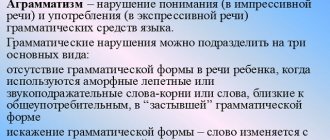Stuttering, as a speech disorder, is characterized by a disorder of the tempo-rhythmic characteristics of speech. It has a complex structure, which is based on problems of a psychological, biological and social nature.
Therefore, when organizing work to correct this deficiency in both children and adults, one should use a comprehensive methodology that includes various areas involving the interaction of a speech therapist, psychologist and neurologist.
Speech therapy work with people who stutter, in turn, conventionally includes several stages:
- Formation of speech breathing (exercises, breathing exercises).
- Work on articulatory muscles, strengthening the mandibular muscles (articulatory gymnastics).
- Formation of prosodic components of speech (work on intonation).
- Correction and development of psychomotor skills (logorhythmics, finger exercises).
- Impact on the nervous system through articulation massage.
Methodology for the formation of speech breathing
Before you begin to form speech breathing, you must use the practice of silence. This will make it easier to overcome the conditioned stuttering reflexes that have formed in the future. The silent mode will make you feel more comfortable psychologically, since a person who stutters will not experience discomfort when interacting with other people. This practice is recommended to be carried out on average for a week.
Exercises for the formation of speech breathing in children with stuttering are classified into:
- exercises with elements of logorhythmics;
- a complex aimed at forming correct inhalation/exhalation;
- breathing exercises.
In order for work on breathing with stuttering children or adults to be carried out holistically, it is recommended:
- Before class, ventilate the room well;
- exercise no earlier than half an hour after the last meal;
- do not overwork, do not prolong the lesson, you should work not for quantity, but for quality;
- ensure that all exercises are performed correctly.
Before you begin the complex for developing correct speech breathing, make sure that your posture is level, especially if the exercises are performed in a sitting or standing position.
When correcting pronunciation, simple tasks are first offered. Gradually they become more complex. For preschoolers, classes should be conducted in a playful way.
Exercise 1: helps you learn how to inhale and exhale correctly.
Performed while lying down. A light, stable object, such as a pillow, is placed on the stomach. As you inhale, the stomach rises, and as you exhale, the air comes out through the mouth with the sounds “pf.”
Exercise 2: Performs the same function as the previous one.
In a sitting position, inhale through your nose and exhale through your mouth, while the air flow as you exhale should not be intermittent. The chest should not lean forward during inhalation.
Exercise 3: aimed at forming correct exhalation and expanding lung volume. This is done as follows.
In a standing position, you need to extend your arm forward parallel to the floor and palm up. Imagine that there is something on your hand that can be blown away, such as a feather. Next, fold your lips into a tube and smoothly, not abruptly and silently, begin to slowly exhale air, as if trying to blow it away.
The development of A. N. Strelnikova can be taken as the basis for a daily complex of breathing exercises. The set of tasks that she offers can be included in speech therapy classes and used independently during individual work as breathing exercises for stuttering.
An integrated approach to stuttering treatment
You can cope with stuttering using neurological techniques.
A person will need to follow the following recommendations from specialists:
- Take medications. The doctor may prescribe medications that inhibit the excessive activity of psychological processes and eliminate seizures. Taking tranquilizers is also indicated.
- Take sedatives. Preference is given to herbal medicines.
- Take reflexology and acupuncture courses.
- Take medications aimed at increasing immunity and strengthening the nervous system.
- Attend psychotherapy sessions.
Stuttering is a common problem and medical science is constantly looking for solutions to eliminate it. In America, a drug was recently developed to treat patients with stuttering. It has already been tested on laboratory mice. Therefore, it is likely that this disorder will soon be able to be managed with the help of medications. D. Maguire, who works at the University of California, is convinced that stuttering is caused by excess production of dopamine in the body. You can suppress its production with Haloperidol. However, this drug has many side effects, so it should not be taken in large quantities. The doctor suggests using Olanzapine to treat stuttering. This drug is undergoing clinical trials and will soon be put into mass production (subject to successful trials).
Of course, parents whose children suffer from stuttering are seriously concerned about this problem. Moreover, his treatment lasts for a long time. This pushes adults to act rashly. They turn to healers and witches to cure a child of stuttering with the help of spells. However, cases of “magical” deliverance from a problem are conveyed only in words, but there is not a single document that would confirm these miracles. Therefore, you should trust more in official medicine, which has made an impressive breakthrough in this area.
Articulation gymnastics for stuttering
Such gymnastics allows you to strengthen the mandibular muscles, tone them, improve facial expressions, and develop speech components such as accuracy, clarity and strength.
Exercise 1: Alternately take in air and puff out your cheeks, then slowly release it.
Exercise 2: “Brushing your teeth.”
This exercise is widely used in regular speech therapy practice, allowing you to improve tongue motor skills. It is performed as follows: the lips are closed, while the tongue “cleanses” from the inside first the upper teeth, then the lower ones. The second version of the exercise: the mouth is in a smile, the lips are slightly open, we move the tongue from the outside of the upper, then the lower row of teeth.
Exercise 3: “Ball on the field.”
The tongue rests alternately on one or the other cheek, while the mouth is closed. You can also add elements of logorhythmics: perform movements simultaneously with the movements of the tongue.
Exercise 4: “Fish”
Patting your lips apart can be alternated with biting.
You should not expect a quick effect from articulatory gymnastics. Also, do not forget that such work will bring significant benefits if it is carried out comprehensively.
Diction exercises
Developing diction allows you to strengthen the muscles involved in speech formation. There are a number of exercises for this.
Exercises for the lower jaw:
- Take a comfortable body position, relax as much as possible, lowering your jaw down. Please note that the distance between the upper and lower teeth should be 2-4 cm.
- Completely eliminate tension during exercise.
- Exhale slowly, pronouncing the vowel “i” in a drawn-out manner. You cannot pronounce the letter out loud; it must come from the throat naturally, with the mouth open two fingers wide. After this, say the letter “ё” in the same silent way, but at the same time squeeze your jaw halfway (the distance between the teeth is 1 finger).
- Do the same exercise, but with clear sound output.
- Now you can use other vowel letters, combining them into pairs.
- After this, not 2 vowels are pronounced, but in larger numbers.
- Say proverbs with your mouth wide open.
- It is useful to read excerpts from the book “Eugene Onegin”.
Activities that develop lip mobility:
- smile widely, but without exposing teeth;
- stretch your lips, revealing your teeth, but without widening your mouth;
- press your lips together as tightly as possible and make a tube;
- stretch your lips with a tube from their original position in a smile;
- alternately raise and lower your lips, exposing your teeth - first show the top row, then the bottom (do not help with your hands);
- pronounce vowels with vowels in combination;
- do the same with consonant sounds;
- purse your lips as tightly as possible, say “b-p”, exhaling forcefully.
A set of exercises, at the beginning of which you pronounce the letters without a voice, then slowly and out loud :
- “and-and-and-and-and”, stretch your lips;
- “o-o-o-o-o-o”, give the lips an oval shape;
- “oo-oo-oo-oo-oo”, make the lips a tube;
- “s-s-s-s-s”;
- “z-z-z-z-z”;
- "sh-sh-sh-sh";
- “w-w-w-w.”
Read poetry, pronounce tongue twisters and speak, showing facial expressions as much as possible. Reduced lip mobility is often the root cause of stuttering. That is why this complex is necessary.
Tongue exercises:
- stick out your tongue as much as possible;
- make a movement first to the right, then to the left;
- make a circle with your tongue in different directions alternately;
- stick your tongue in your mouth;
- bring to the palate;
- run over the teeth from the inside, then from the outside.
During the workout, strictly monitor the correct movements, which will increase the endurance of the tongue and at the same time the lips.
Work on the prosodic side of speech
People who stutter have underdeveloped prosody, which requires correction. The formation of expressive and intonationally correct speech when stuttering includes stages of work on the development of timbre, strength, melody, and voice intonation coloring. In addition to working on your own speech, it is recommended to observe the people around you and analyze how the sound of your voice may differ in emotional coloring, expressiveness, etc. You can use the following exercises for stuttering.
Task 1: “Say kindly.”
This exercise develops such a phonological component as timbre. It is necessary to affectionately repeat as many words as possible in the sentence, while intonationally noting the completeness of the speech. For example, the original “a cat is sitting on a tree” will sound like “a cat is sitting on a tree.”
Task 2: “Blizzard”.
It will help to form such a prosodic side as the strength of the voice. The exercise in its complex performs a number of other functions: articulation, breathing.
Sit in a comfortable position so that your arms and shoulders are relaxed. The lips are folded into a tube, we sound the blizzard. To do this, we say “Ooh” first loudly, then more quietly, gradually lowering our voice to a whisper.
Task 3: “Traffic light”.
This game can be played even on the street. An adult stands with the colors of the traffic light, showing one of the circles to the children. Movement occurs in accordance with color. On red - stop, on yellow - slowly and on green - the child runs fast. The game is accompanied verbally, in accordance with the movements, with the sounds of the motor “Zh-zh”. This game can also be used in classes to develop speech therapy rhythm.
Logorhythmics for stuttering correction
People who stutter experience enormous difficulties, as a rule, not only with speech, but also with general motor skills: there are problems with the motor system. Like speech, movements are abrupt, uncoordinated, abrupt, and unrhythmic. It has been proven that speech development is directly related to the motor system.
Logorhythmic exercises serve as a relationship between them, since the development of one has a beneficial effect on the development of the second. Starting from simple to complex, the child is initially offered only alternating basic physical exercises, such as running, walking and listening to appropriate music. You can do it with your child even at home.
Example of a task: children run one after another on their tiptoes to the sound of a bell, when they hear that the musical instrument has changed, for example, to a tambourine, they begin to walk, etc.
Elements of speech therapy rhythms can be traced even in ordinary physical exercises, where it is necessary to “play out” words with appropriate movements: bending, turning the body, squatting, etc. Finger gymnastics can also be included in the work; they have the same principle, only the movements do not involve the whole body, but only the hands, which allows you to improve fine motor skills.
Logorhythmic exercises for stuttering in children have a beneficial effect on the correction and formation of speech.
To develop a sense of rhythm
Speech therapy rhythms involve motor exercises that pursue different goals.
Warm-up
Includes various marching to music with changing directions. Helps you get ready for future work.
Normalization of muscle tone
Suitable exercises: freely swing your arms back and forth, to the sides, alternating between tensing and relaxing your arms.
Rhythmization of movements
Walking, clapping and tapping to different musical tempos and rhythms, singing words and syllables are used. Example: clap the song “Cockerel, cockerel, golden comb.”
Effectively use active exercises accompanied by music and speaking of speech tasks. For example, students pronounce the text and accompany it with movements: “Above us is a tall oak tree (arms to the sides), above us are pine trees, spruce trees (tilts left and right), their heads rustled (clap).”
Articulation massage as a means of complex effects on the nervous system for stuttering
With problems with speech and delays in its development, weakness of the articulatory muscles is most often observed. Stuttering is no exception. For this disorder, it is recommended to increase general nervous excitability. This is done using articulation massage. This method helps to activate previously unused muscles, improve overall tone, and relieve tension.
A speech therapist uses elements of massage in his work, but you can also do this yourself at home. Various manipulations with the organs of the articulatory apparatus are used as techniques for this: biting, rubbing, pressing, stroking, vibration, etc.
Other methods for correcting pronunciation when stuttering
Also in speech therapy practice, an effective relaxation method is actively used. To stop stuttering and learn to relieve spastic muscle tension, your child should be able to relax. To do this, ask him to clench his hand into a fist, then relax it, spread his fingers to the sides, then place his hands calmly on his knees, etc. This kind of exercise actively helps with neurotic stuttering in adolescents.
It has long been noted that stuttering disappears while singing. Therefore, vocal classes are recommended for people suffering from this speech disorder. Vocal lessons will help both children and adults. The sooner this practice is started, the easier and faster it will be to cope with stuttering.
Games and exercises to develop speech tempo
The following tasks teach children to recognize fast and slow speech and vary their own tempo. We say at different speeds:
- vowels in any sequence: a-u-o-i-s;
- syllable rows with alternating soft and hard vowels (example: se-sy-su-sa, ze-zyu-zya-zi");
- "Tongue Twisters". For example, “The hedgehog has a hedgehog, the grass snake has a bite,” “The heron, standing on the porch, wrote the letter C.”
Children like fairy tales and tongue twisters and lift their spirits. Choose simpler ones at first, gradually increasing complexity.











